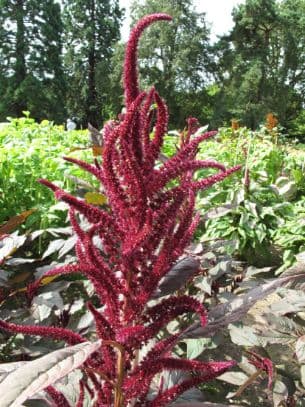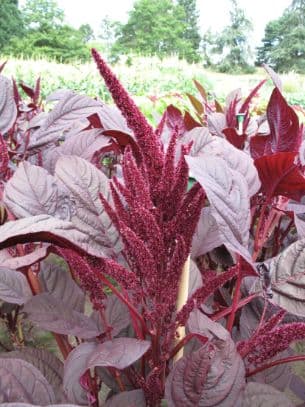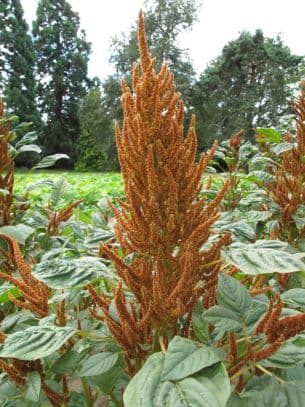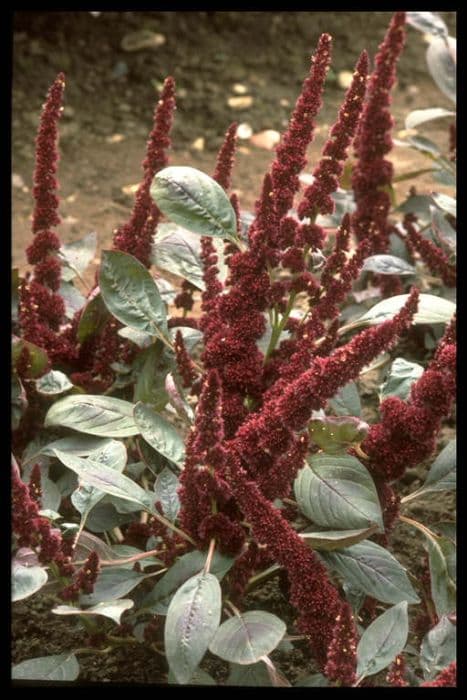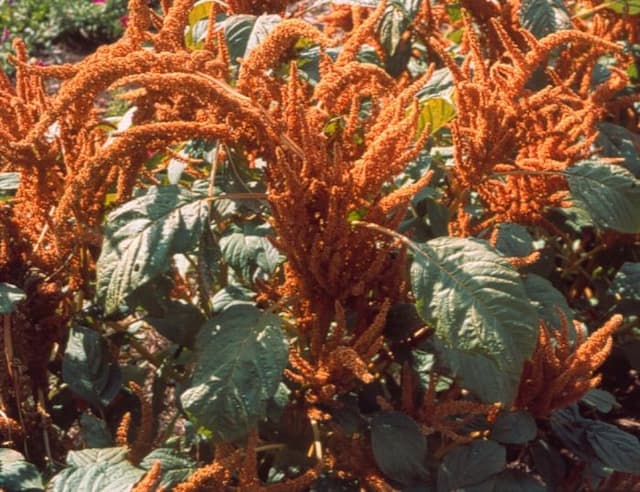Joseph's Coat Alternanthera dentata 'Royal Tapestry'

ABOUT
The Alternanthera dentata 'Royal Tapestry', commonly known as the Joseph's Coat, is an attractive plant heralded for its colorful and variegated foliage. This plant features leaves that are a mix of deep burgundy and hot pink, which together create a rich tapestry of color and visual appeal. The leaves themselves have a broad, elliptical shape, with edges that can range from smooth to slightly serrated or wavy, giving the plant a lush, dense appearance. The combination of colors may intensify under certain conditions, making the Joseph's Coat a striking choice for gardeners looking to add a splash of color to their plant collection. The overall texture of the plant is somewhat coarse, yet it contributes to the ornamental quality of the plant with its vibrant hues and interesting leaf structure.
About this plant
 Names
NamesFamily
Amaranthaceae.
Synonyms
Purple Knight, Ruby Leaf Alternanthera, Royal Tapestry Joseph’s Coat.
Common names
Alternanthera dentata 'Royal Tapestry'.
 Toxicity
ToxicityTo humans
The Alternanthera dentata 'Royal Tapestry', more commonly known as Joseph's coat, is not known to be toxic to humans. There is limited information on its toxicity, but it is generally not considered poisonous. Therefore, no specific symptoms of poisoning are documented for this plant when ingested by humans.
To pets
Joseph's coat is not typically listed as toxic to pets. However, as with any non-food plants, ingestion in large quantities could potentially lead to gastrointestinal upset, such as vomiting or diarrhea in sensitive individuals. It is advisable to keep an eye on pets if they show interest in eating this plant and to consult a veterinarian if any adverse reactions are observed.
 Characteristics
CharacteristicsLife cycle
Perennials
Foliage type
Evergreen
Color of leaves
Mixed
Height
1-2 feet (30-60 cm)
Spread
1-2 feet (30-60 cm)
Plant type
Shrub
Hardiness zones
10
Native area
South America
Benefits
 General Benefits
General Benefits- Vibrant Foliage: Alternanthera dentata 'Royal Tapestry' offers striking purple and burgundy leaves, adding a splash of color to any garden or landscape.
- Low Maintenance: This plant is relatively easy to care for, requiring minimal attention once established, which makes it suitable for both beginners and experienced gardeners.
- Drought Tolerance: Once established, it has a good tolerance for dry conditions, making it suitable for xeriscaping and water-wise gardens.
- Versatility: It can be used in a variety of garden settings, including borders, ground covers, and as a colorful accent in container gardens.
- Wildlife Attraction: The plant can attract butterflies and other beneficial insects, providing ecological benefits to the garden.
- Fast Growing: 'Royal Tapestry' has a quick growth rate, which allows for rapid filling of garden spaces and can provide quick visual impact.
- Seasonal Interest: Its foliage provides year-round interest, especially in regions without frost, maintaining its color through multiple seasons.
- Heat Tolerance: It is well-suited for hot climates and can thrive in the heat of summer with proper care.
- Creative Uses: The colorful leaves are sometimes used in floral arrangements, providing a unique and artistic touch to bouquets and displays.
 Medical Properties
Medical PropertiesThis plant is not used for medical purposes.
 Air-purifying Qualities
Air-purifying QualitiesThis plant is not specifically known for air purifying qualities.
 Other Uses
Other Uses- Joseph's Coat can be used in terrariums or vivariums providing a lush, colorful foliage backdrop for small reptiles or amphibians.
- The vibrant leaves of Joseph's Coat are used in floral arrangements as a filler to add contrast and interest alongside flowers.
- Jospeh's Coat is often used in educational projects to demonstrate plant propagation through cuttings in classrooms or workshops.
- In crafting, the leaves of Joseph's Coat can be pressed and used to create botanical prints or artwork.
- This plant can be employed in theme gardens, like 'Alice in Wonderland' gardens, due to its whimsical color varieties.
- The dense growth habit of Joseph's Coat lends itself to shaping and can be used in topiary art.
- The contrasting colors of Joseph's Coat make it a popular choice for planting in monochromatic gardens to serve as an accent feature.
- Jospeh's Coat can be used as a natural dye source, with its pigments used to stain fabrics or paper crafts.
- Photographers may use Joseph's Coat as a picturesque background or an object focus in macro photography due to its detailed leaf patterns.
- Joseph's Coat is included in sensory gardens for its varied leaf textures and vivid colors to stimulate the senses of sight and touch.
Interesting Facts
 Feng Shui
Feng ShuiThe plant Alternanthera is not used in Feng Shui practice.
 Zodiac Sign Compitability
Zodiac Sign CompitabilityThe plant Alternanthera is not used in astrology practice.
 Plant Symbolism
Plant Symbolism- Joy: The vibrant and rich foliage of Alternanthera dentata, commonly known as "Joseph's Coat," is often associated with joy and happiness, bringing a cheerful presence to any garden space.
- Diversity: "Joseph's Coat" boasts a variety of colors and patterns in its leaves, symbolizing the beauty and positivity in diversity and the blending of different elements in harmony.
- Creativity: The unique coloration and texture of the Joseph's Coat's leaves can inspire creativity, making it a symbol for innovative thinking and artistic expression.
- Adaptability: As Joseph's Coat can thrive in various conditions and is frequently used as a versatile foliage plant in landscape designs, it symbolizes adaptability and the ability to flourish in different environments.
 Water
WaterJoseph's Coat 'Royal Tapestry' should be watered regularly, ideally when the top inch of soil feels dry. During active growing seasons like spring and summer, this may be once a week, but always check the soil moisture before watering. Provide the plant with about 16 ounces of water at each watering, ensuring that the water penetrates the soil deeply but does not leave the plant sitting in water, which can promote root rot. Reduce the frequency of watering during the cooler months when plant growth slows down. It's crucial not to overwater Joseph's Coat, as it prefers a consistent level of moisture but does not tolerate soggy conditions.
 Light
LightJoseph's Coat 'Royal Tapestry' thrives best in bright, indirect sunlight. It should be placed in a location where it can receive plenty of light without being exposed to the harsh midday sun, which can cause leaf burn. If grown indoors, a spot near a window with filtered light or a sheer curtain would be ideal. However, some direct morning sunlight can be beneficial for vibrant foliage coloration. This plant will not do as well in low-light conditions, where it may become leggy and lose its vivid coloring.
 Temperature
TemperatureJoseph's Coat 'Royal Tapestry' prefers warm temperatures and should be kept in conditions ranging between 60 to 85 degrees Fahrenheit for optimal growth. It can tolerate a minimum temperature of around 40 degrees Fahrenheit. However, it should not be exposed to temperatures below this, as it is not frost-hardy and may suffer from cold damage. The plant will thrive when the temperature is consistently warm, similar to its native tropical and subtropical environments.
 Pruning
PruningPrune Joseph's Coat 'Royal Tapestry' to maintain its shape, encourage bushier growth, and remove any dead or yellowing leaves. Periodic trimming, done in the spring or early summer, can help promote denser foliage and prevent the plant from becoming leggy. It's generally good to prune back up to one-third of the plant's size to stimulate new growth without stressing the plant. Always use clean, sharp shears to make precise cuts and minimize the chance of disease.
 Cleaning
CleaningAs needed
 Soil
SoilJoseph's Coat 'Royal Tapestry' prefers a well-draining soil mix, rich in organic matter. For best growth, a mixture of peat, compost, and perlite or pine bark is ideal, creating an airy yet moisture-retentive medium. The pH range suitable for Joseph's Coat 'Royal Tapestry' is between 5.5 and 7.5, slightly acidic to neutral.
 Repotting
RepottingJoseph's Coat 'Royal Tapestry' should be repotted every 2-3 years to replenish nutrients and prevent root bounding. Younger, faster-growing plants may require yearly repotting, while established specimens can be repotted less frequently, as indicated by their growth rate and pot size.
 Humidity & Misting
Humidity & MistingJoseph's Coat 'Royal Tapestry' thrives in moderate to high humidity levels, ideally between 40-60%. Consistently high humidity helps maintain its vibrant foliage but should be balanced with good airflow to prevent fungal issues.
 Suitable locations
Suitable locationsIndoor
Provide bright indirect light and regular watering.
Outdoor
Plant in partial shade, water regularly, protect from frost.
Hardiness zone
10-11 USDA
 Life cycle
Life cycleAlternanthera 'Royal Tapestry', also known as Joseph's coat or calico plant, begins its life as a seed, which upon germination in warm temperatures and moist soil, develops into a seedling with the first set of true leaves. The seedling continues to grow, becoming a mature plant with vibrant foliage of purple, red, and green, which is the main ornamental feature of this cultivar. As a perennial in warmer climates or an annual in cooler regions, it achieves full foliage and may produce small white, inconspicuous flowers in ideal conditions. After flowering, it can produce seeds, completing the sexual phase of its life cycle. However, in many ornamental uses, it rarely sets seed and is instead propagated through cuttings, leading to a vegetative growth phase that can be repeated annually. If subjected to a seasonal climate, Joseph's coat will die back in winter, but in the perennial zones, it can regrow from the roots or remain evergreen.
 Propogation
PropogationPropogation time
Spring-Early Summer
Alternanthera dentata 'Royal Tapestry', commonly known as Joseph's coat, can be effectively propagated by stem cuttings. This method is most successful during the warm months, typically from spring to early fall. To propagate Joseph's coat using stem cuttings, choose a healthy, non-flowering stem and cut a 4 to 6-inch length (approximately 10 to 15 cm). Remove the leaves from the lower half of the cutting and dip the cut end into rooting hormone to increase the chance of successful rooting. Then, insert the cutting into a pot filled with a moistened mix of peat and perlite, ensuring at least two nodes are buried where leaves were removed. The cutting should then be placed in bright, indirect light and kept consistently moist. Roots typically form in a few weeks, after which you can transplant the cutting into a more permanent pot or garden location.


